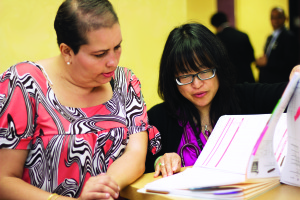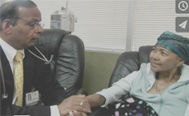White Blood Cell Overproduction
 White blood cells are a critical component of the human immune system. They are responsible for helping the body to fight off infections and illnesses, specifically the four types of major infections – bacterial, parasitic, fungal, and viral. White blood cells are produced by the bone marrow, and consist of five subtypes of white blood cells:
White blood cells are a critical component of the human immune system. They are responsible for helping the body to fight off infections and illnesses, specifically the four types of major infections – bacterial, parasitic, fungal, and viral. White blood cells are produced by the bone marrow, and consist of five subtypes of white blood cells:
- neutrophils
- monocytes
- lymphocytes
- eosinophils
- basophils
White Blood Cell Overproduction
If a particular white blood cell count is too low, it can compromise the immune system’s ability to adequately fight off illnesses and infection. On the flip side, when there is a malfunction or mutation in the bone marrow that results in an overproduction of white blood cells, it results in a condition known as chronic myelomonocytic leukemia (CMML).
The most common symptoms of CMML include:
- Fatigue
- Anemia
- Enlarged spleen
- Leucopenia (recurring and frequent infections)
- Unexplained bleeding and bruising
- Petechiae (tiny red spots caused by bleeding under the surface of the skin)
Diagnosis and Treatment for CMML
The treatment options for chronic myelomonocytic leukemia will vary according to the severity of the condition, how advanced it is at time of diagnosis, as well as individual patient factors such as age and overall health and fitness.
The standard treatment options for CMML include:
- Stem cell transplant
- Radiation
- Chemotherapy
- Surgery
- Supportive therapies
Risk factors for CMML include:
- Age (the disease is rare under the age of 40, and the risk increases with age)
- Gender – men are twice as likely to develop chronic myelomonocytic leukemia than women
- Previous cancer treatment – treatment with chemotherapy can increase the risk of developing CMML for some people
CMML symptoms can overlap with other blood conditions. An overproduction of monocytes, as well as low counts for other types of white blood cells can cause similar symptoms, and lead to secondary infections and illnesses due to the immune system’s inability to properly function when any of the subtypes of white blood cells become compromised.
There are many different forms and subtypes of leukemia (blood cancer). The four main categories are:
- Acute lymphocytic leukemia (ALL)
- Chronic lymphocytic leukemia (CLL)
- Acute myeloid leukemia (AML)
- Chronic myeloid leukemia (CML)
While many of the symptoms that are associated with an overproduction of monocytes and other white blood cells do not necessarily indicate the presence of blood cancer, it is important to pay attention to and seek medical attention for any persistent and unexplained symptoms that do not resolve on their own over time.
Other leukemia and blood cancer-related symptoms that everyone should be aware of include:
- Pain in the joints and bones
- Fatigue
- Fever
- Infections
- Unexplained weight loss and loss of appetite
- Dizziness
- Bleeding
- Easy bruising
- Mouth ulcer
- Nosebleed
- Pallor
- Red spots on skin
- Shortness of breath
- Swollen lymph nodes
Obtaining an accurate and timely diagnosis for blood cancer is the most important element to successful treatment and management of symptoms. The board-certified oncologist and leukemia specialists and the Cancer Center of Southern California offer individualized treatment and care for patients at all stages.
Next, read Chronic Lymphocytic Leukemia.


